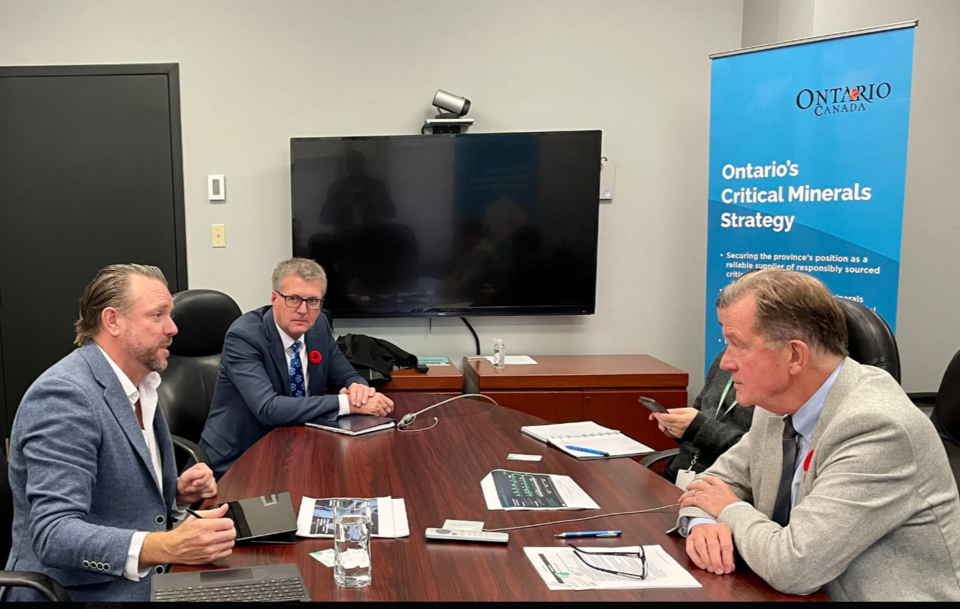Green Technology Metals, a fast-moving Australian lithium explorer in northwestern Ontario, is on the hunt for a new CEO.
Luke Cox is resigning as of July 19. Cameron Henry, the company’s executive director, will step in on interim basis until a successor is named.
The news comes at a pivotal time as Green Tech said it’s preparing to line up financing and carry out the technical studies needed to make a decision on constructing an open-pit mine near the north end of Lake Nipigon.
Since the company arrived in Canada in 2021, the ambitious junior miner hasn’t been shy about predicting they will be the first company that will be producing lithium hydroxide for the electric car plants in Ontario.
Green Tech wants to develop two mines in the region and build a downstream lithium conversion plant in Thunder Bay.
The company has 10 projects spread out over 56,000 hectares across the northwest. Its lead project, Seymour, near Armstrong, is the frontrunner with a feasibility study underway on the 10-million-tonne lithium deposit. First production is expected sometime in 2025.
The Root deposit, northeast of Sioux Lookout, is the next project in the pipeline.
By year’s end, Green Tech said it expects have all the necessary permits and approvals in place for Seymour. Should construction proceed, timber harvesting will occur next winter to to clear the site for the pit.
With Green Tech moving to the next stage, Cox said in a parting comment last week that it’s time for the company to find a new boss.
“As we progress towards DFS (definitive feasibility study) and FID (financial investment decision) the business requires enhanced management presence in Canada.
“So, it’s time to clear the path and hand over the baton heralding the next stage of project development to shore up the integrated supply chain in Ontario, Canada."
Green Tech said it’s put a management team and board in place that know how to develop Canadian lithium projects as well as navigate all the complexities of securing permits and raising capital.
“As the company continues to advance, we have recognized the differing requirements for leading the company through the next stages of development,” said Henry in a statement.
“On behalf of the company and management, I extend my gratitude to Luke for his leadership since our IPO three years ago. The intangible value we've added to the company is significant, and we thank Luke for his part in the story to date.”
But development can't happen without strategic partners with deep pockets. Electric car and battery manufacturers are eager to secure supplies of lithium, but the price of the commodity has been plunging since last July.
Seymour is a $288-million project. An integrated Thunder Bay refinery and a two-mine project carries a $1.8-billion price tag.
Green Tech has been fortunate to secure strategic industry partnerships with AMCI Group, Lithium Americas and battery maker LG Energy; the latter has a binding off-take agreement for the first five years of Seymour's production.
Their objective, Green Tech said, is to capitalize on those partnerships to raise financing while also working the street to attract more investors to come aboard. The company also wants to partner to develop the Thunder Bay refinery and is pursuing some of the biggest lithium chemical producers in the world.
There’s also $20 billion in government subsidies to be had.
Green Tech said an application has been submitted to the federal Critical Minerals Infrastructure Fund to secure $7.5 million. The funding would be earmarked to upgrade community and industry access roads linking the future Seymour Mine to the community of Armstrong.
Other funding applications are going into the Canadian Infrastructure Bank under the federal Critical Minerals Strategy. The company believes that about $90 million of the capital needed to build the mine would be available under the program.



